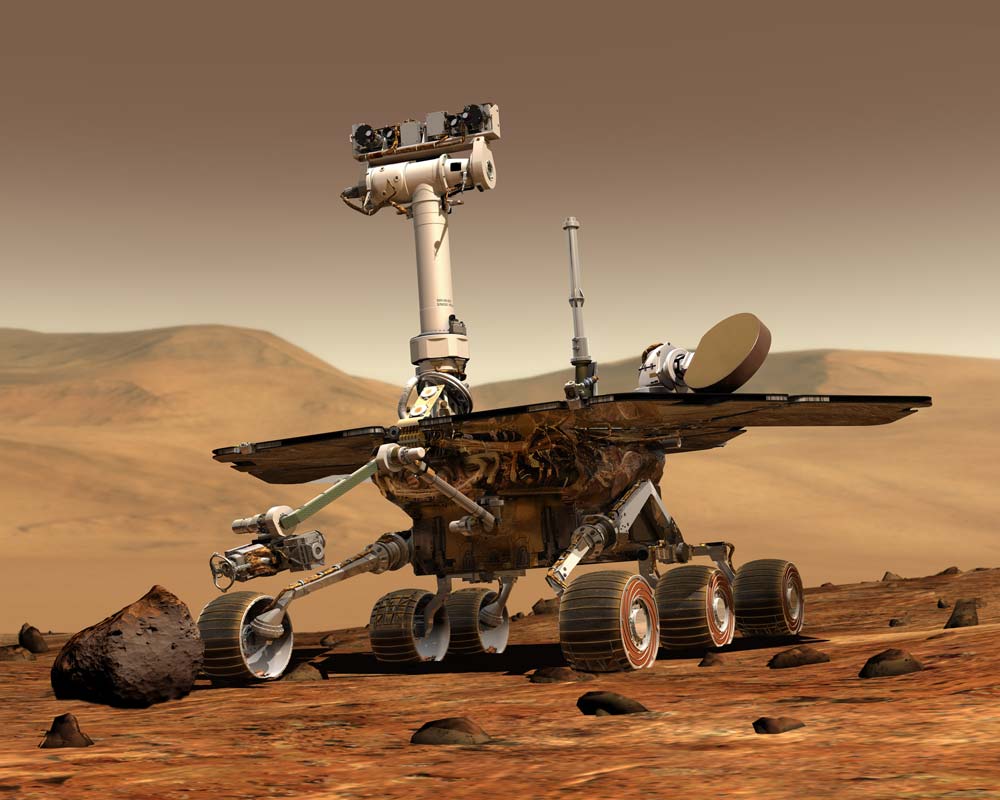A broken wheel could have uncovered the best prospects yet for finding life on Mars, say scientists this week.
 Writing in this week's Science, Cornell researcher Steven Squyers and his colleagues describe how the movement of their rover, Spirit, which has a broken wheel, carved a furrow into the Martian surface, revealing a layer of very white-coloured material. Intrigued, the team turned the rover's instruments on the light coloured layer and identified it as silicate, a mineral which forms around structures such as hydrothermal vents and fumaroles when hot mineral-laden water emerges, cools and drops its cargo of salts.
Writing in this week's Science, Cornell researcher Steven Squyers and his colleagues describe how the movement of their rover, Spirit, which has a broken wheel, carved a furrow into the Martian surface, revealing a layer of very white-coloured material. Intrigued, the team turned the rover's instruments on the light coloured layer and identified it as silicate, a mineral which forms around structures such as hydrothermal vents and fumaroles when hot mineral-laden water emerges, cools and drops its cargo of salts.
On Earth, environments like this contain abundant forms of life, and silica turns out to be extremely good at preserving them. So this discovery, say the researchers, is important for two key reasons. First it confirms that Mars had significant water in the past, but second it also pinpoints an important place to look for life in future.
"On Earth, hydrothermal deposits teem with life and the associated silica deposits typically contain fossil remains of microbes," says co-author Jack Farmer, from Arizona State University. "But we don't know if that's the case here because the rovers don't carry instruments that can detect microscopic life. What we can say is that this was once a habitable environment where liquid water and the energy needed for life were present."
The discovery was made as Spirit explored a football-field sized region called Home Plate which sits within a giant 100 mile wide crater. Together with its partner Opportunity, Spirit began to explore Mars in early 2004 on a mission designed to last just 3 months. Now, four years later and in spite of a battering by the Martian weather and accumulating dust on their solar panels, both rovers are still making discoveries. Even more ironic is the fact that had Spirit not had a broken front wheel, this particular finding would never have been made!







Comments
Add a comment